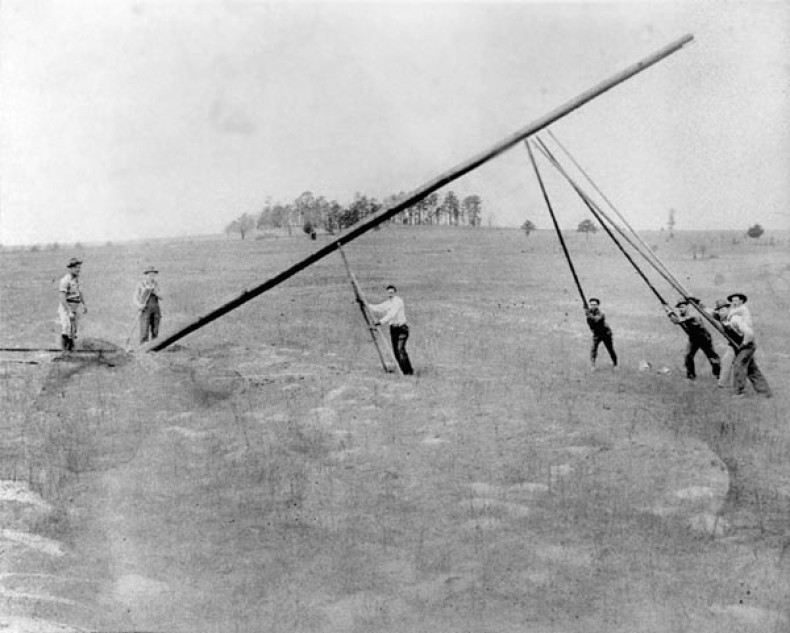When power and poles first came to rural Polk County
Cooperatives nationwide hired local men to help raise poles that first brought electricity to rural areas.
By Tarry S. Bradley
By 1948, the Rutherford Electric Membership Corporation had reached the remote sections of rural northern Polk County offering electricity to people who would join the cooperative. A big sign at the country store let people know that for a one-time $5 membership fee, they could receive electricity. My mother, Cleo Ownesby Bradley, said that was too good to be true. She wouldn't let my father, Spurgeon Bradley, go down to sign up and spend the $5. Times were hard, and she did not want to waste money.
The next year, power lines reached the people of Cooper's Gap Township — the ones who had spent the money. After seeing the reality of electrification, Momma relented and let Daddy go and sign up for this new electricity. In 1950, a power line came up Grassy Knob Road, then up Blanton Road, and finally over to King Stepp Road, where we lived.
King Stepp Road was not a state-maintained road, and no big trucks could get up and down it. Rutherford EMC contracted with Daddy to help the men bring electricity to us. He took Ol' Mabel, the mule, and dragged all the power poles (15 to 20) to the locations where they would be set in the ground. He also used Ol' Mabel to pull the electric wire from pole to pole. Daddy knew how electricity would be run to houses because he had worked for R. H. Bouligny Electric Company out of Charlotte in 1947, the year I was born. Rutherford EMC paid my daddy $4.50 for three hours that he worked with the family mule.
One cold December day in 1950, a small truckload of men came to our house, and I went outside to watch them set the pole in our yard. They dug the hole by hand with what looked like a 10-foot-long pair of posthole diggers. When the hole was dug, and they were ready to set the pole, one of the men said to "grab the dead man." As a 3-½ year-old boy, I wondered where the dead man was and what they would use him for. Three or four men picked up the top part of the pole and another man placed a brace (the "dead man") under the pole, and they raised the pole higher in the air. They repeated this procedure until the pole fell into the hole. It was a cold day for a little boy, but I was awestruck and watched the men work anyway. One man climbed the pole and attached the electric wires that would soon bring lights into our home.
After they connected the wires to our house and left, I decided that I too could climb as the man had just done. I ran toward the pole and wrapped myself around it and tried in vain to go up the new pole. I tried and tried but never left the ground. I learned later that the REMC man had hooks in his boots.
Momma and Daddy are gone, but the old house still stands today at 999 King Stepp Road. The power lines have since been buried underground, but as we requested, the bare REMC pole remains standing in the yard. I sometimes go back and recall that cold December day that I had no hooks in my boots.
Rutherford EMC built this power line 1½ miles to reach four houses in December 1950. Today, that same mile-and-a-half serves three developments with over 75 lots and nearly 30 houses along the way. What will 60 more years bring?
About the Author
Mr. Bradley is a member of Rutherford EMC and lives in Mill Spring.-
Share this story:


